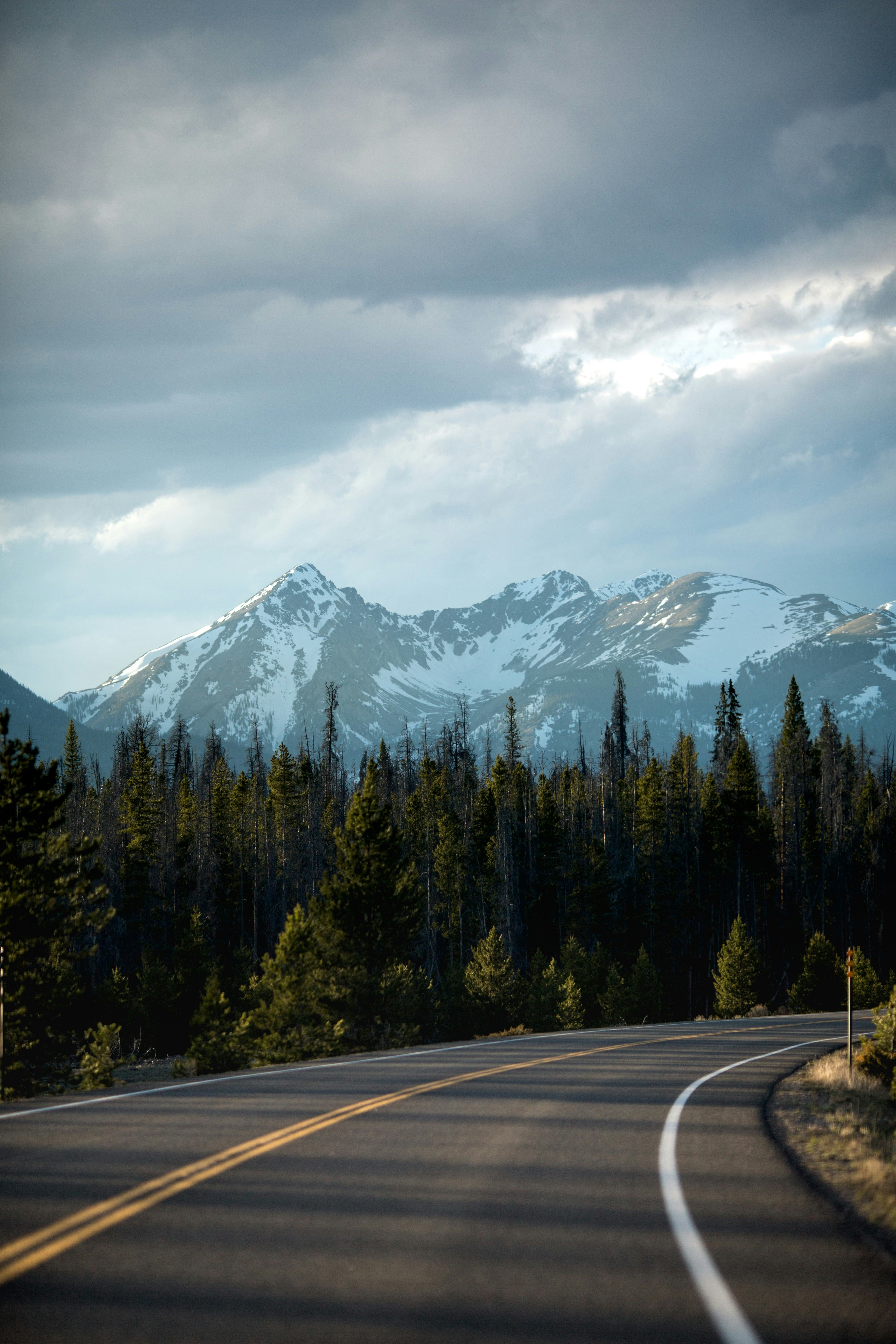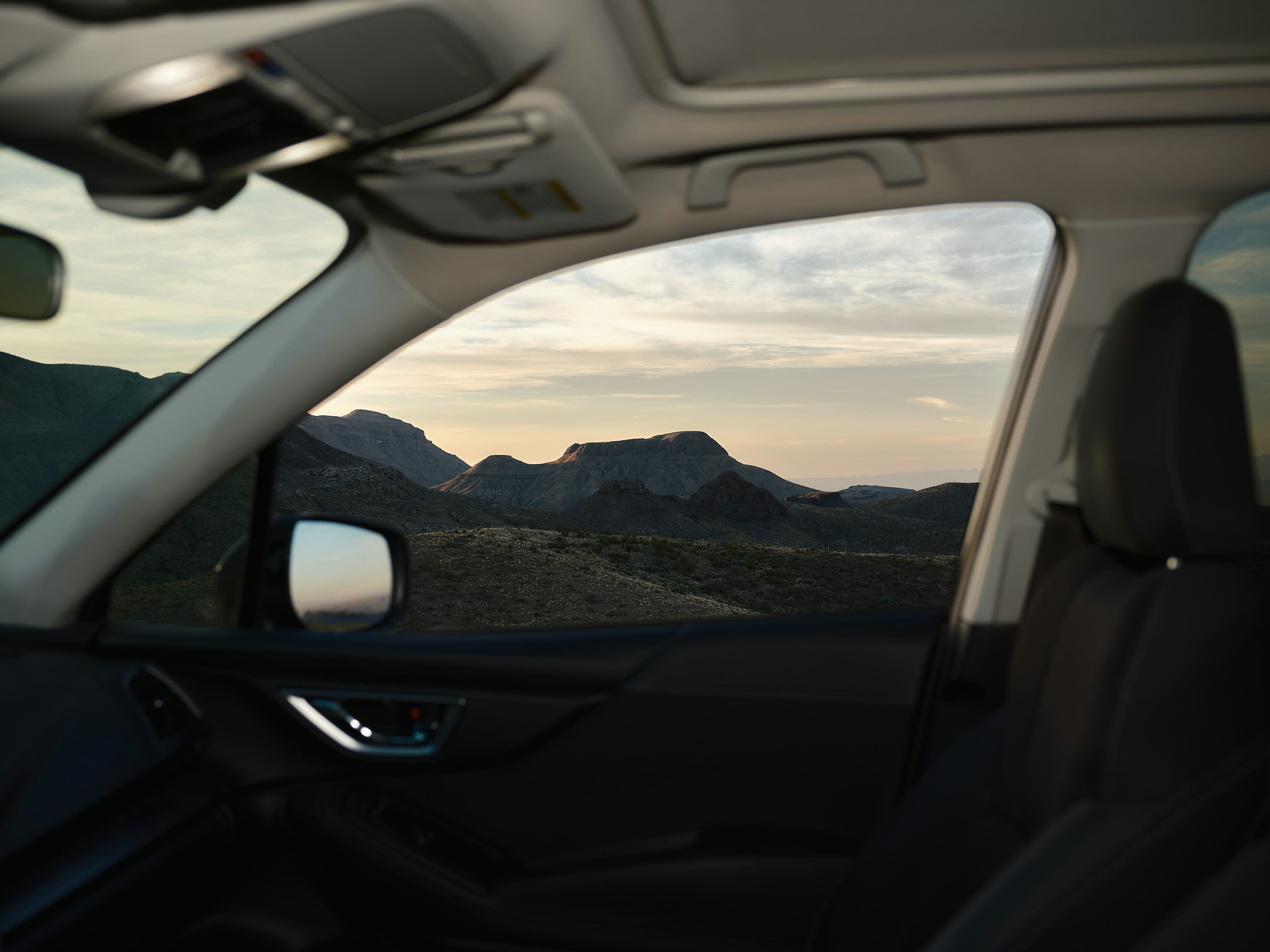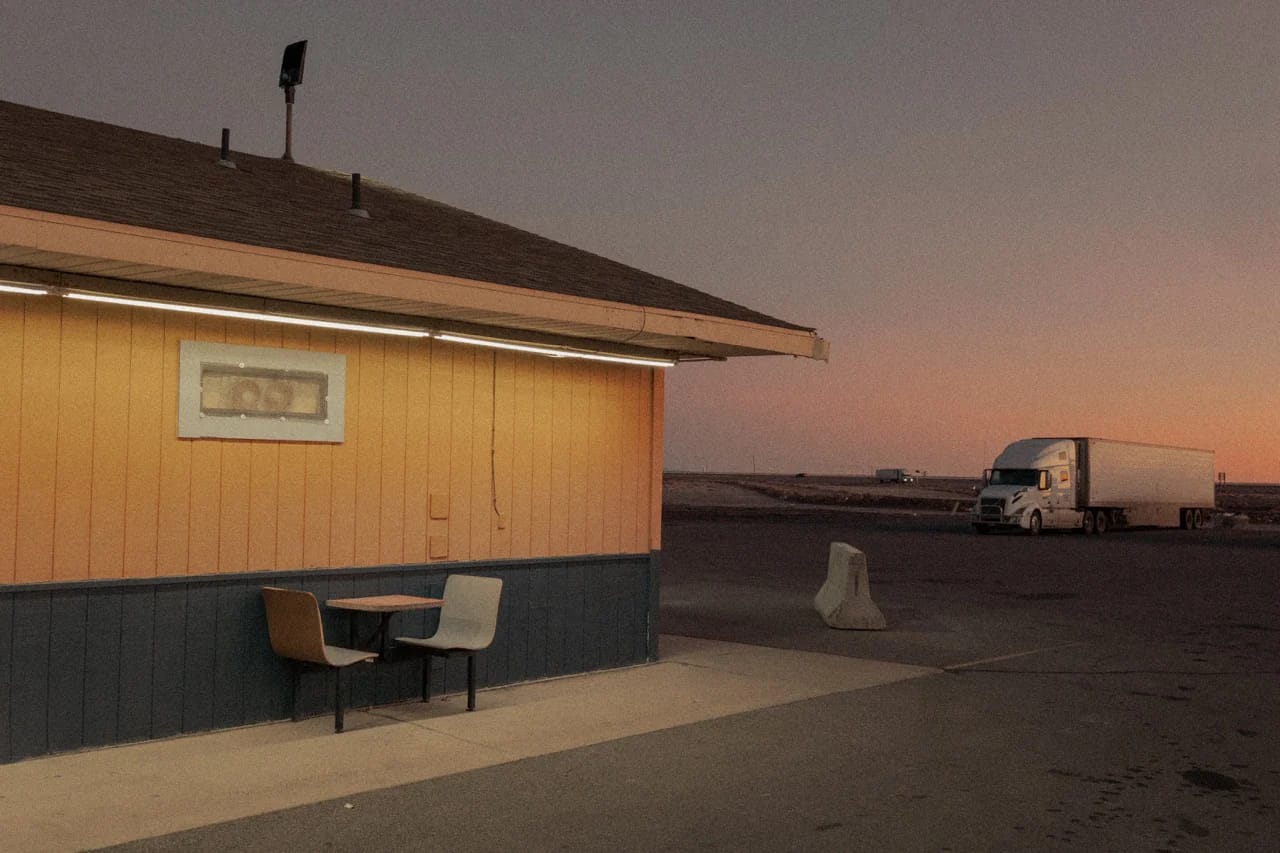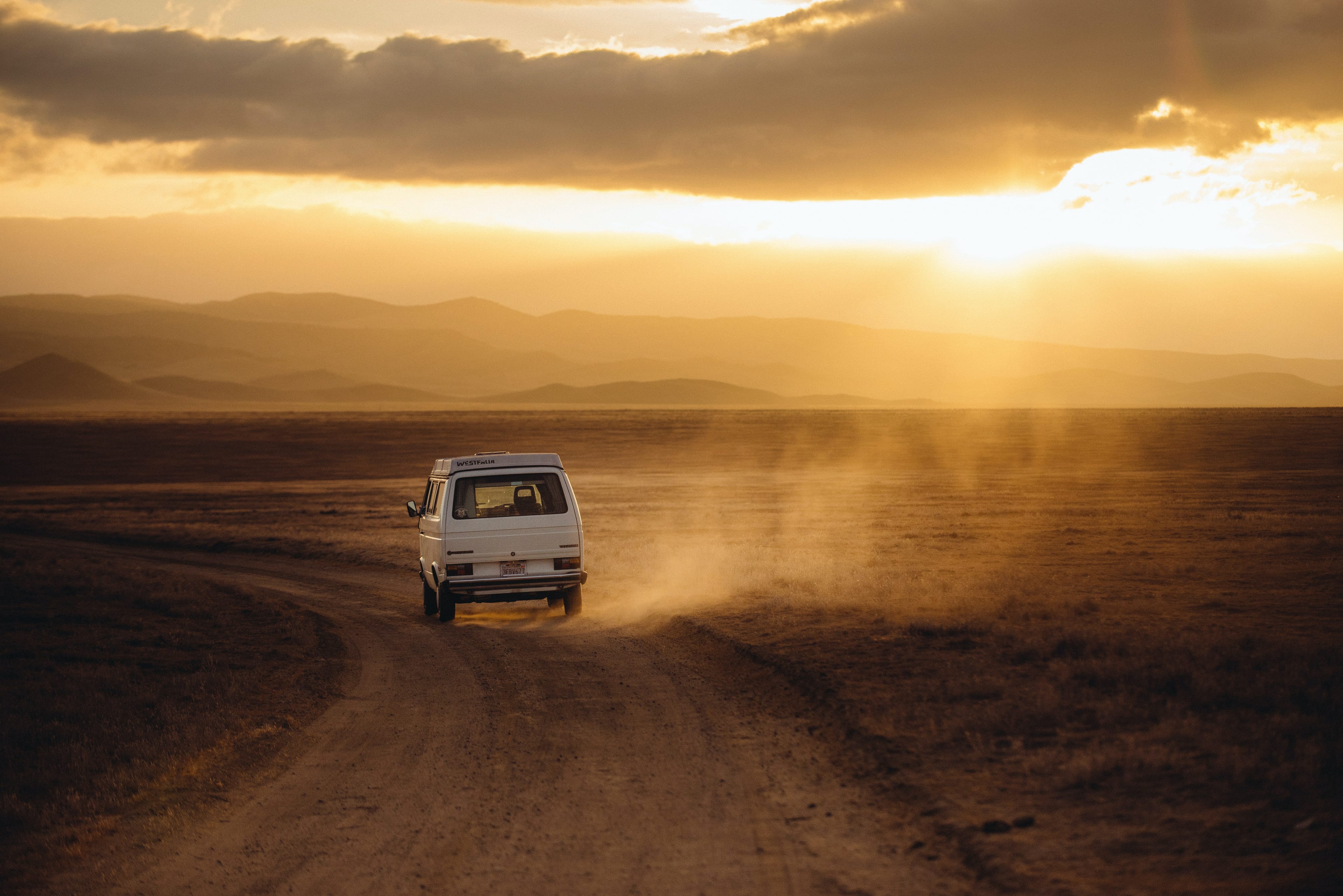A Year of Road-Trip Recipes
Rashad Frazier whips up his buttermilk pancakes with creme fraiche & berry compote | Alex Forestier
With its prep-to-packing and open flames under open skies, cooking on the road presents special challenges—and rewards. The recipes collected here from the Wildsam community make it easier: Pancake breakfasts by the fire, taco lunches, big steak dinners and a twist on the s’more brightened with fresh berries. Dig in!
WINTER
Art Director Ashley Burch shares her favorite campsite shakshuka, a dish adaptable to breakfast, brunch or a hearty dinner. Meanwhile, chef/bartender Jaime Miller offers something warm to sip on as you prep.

SHAKSHUKA
By Ashley Burch
+ 2 tbsps olive oil
+ 1 cup chopped yellow onion
+ 1 red bell pepper, diced
+ Salt to taste
+ Ground pepper to taste
+ 3 garlic cloves, minced
+ 1/2 teaspoon paprika
+ 1/2 teaspoon cumin
+ 1/4 teaspoon cayenne pepper
+ 1 28-ounce can crushed tomatoes
+ 2 tbsps harissa paste
+ 3 to 5 large eggs
+ Cilantro for garnish
+ 1 avocado, sliced, for serving
+ Tortillas or pita bread for serving
1. Heat oil over medium heat in a skillet that has a lid. Add the onion, red pepper, salt and pepper and cook until soft and translucent.
2. Reduce heat to medium-low and add garlic and spices. Stir until fragrant, about 30 seconds, then add the tomato and harissa. Simmer until the sauce thickens, about 10-15 minutes.
3. Use the back of your spoon to make wells in the sauce for the eggs. Cover and cook until the eggs are set to your liking.
4. Season with salt and pepper. Garnish with cilantro and avocado.
5. Assemble as a taco or in a bowl with pita bread for scooping.
Note: “Shakshuka” means “mixed” in Maghrebi Arabic—so feel free to add more ingredients. Some of our favorites are spinach, chickpeas, and feta cheese.
Rum Hot Toddy
Makes 1 drink
1 1/2 ounces rum (such as Dipomático Reserva)
1/2 ounce lemon
1 ounce wildflower honey syrup (equals parts honey and hot water, mixed)
3 1/2 ounces hot water
Cinnamon stick for garnish
In a mug, mix together the rum, lemon and honey syrup. Pour in hot water and serve with cinnamon stick.
- Jaime Miller
SPRING
Drew Robinson of Portland, ME, isn't just an avid camper. He's a professionally trained chef who has worked in—and consulted for—some of the finest restaurants in the country. So naturally, his Joy of Cooking-style "recipes" here takes us beyond a single meal to something more like a dinner-to-breakfast plan.

STEAK, ASPARAGUS, POTATOES
“For me, the key is to prep as much as you can in advance, and keep everything as
simple as possible. For steak and asparagus, I like to sous vide the steaks one temp below how I want to eat them. I’ll vacuum seal asparagus with some butter, and poach it sous vide in advance. Partially cooked food that is vacuum sealed packs really well in a cooler. And you don’t have any truly raw meat to worry about getting leaky and messy. I’ll steam some potatoes at home, toss them with olive oil, sauteed pepper and onions, salt and pepper and then double-wrap them tightly in a foil pouch. When we’re ready to eat, we build a fire in our fire ring at the campsite and let the foil pouch of potatoes start to warm on one side of the grill. On the other, I grill the steaks long enough to get nice, grilled caramelization and to bring them up from rare to medium rare. While the steaks rest, I flip the foil pouch of potatoes, and then grill the asparagus. By the time it’s hot and has some nice grill marks, it’s cooked perfectly. The cleanup is super-easy because you started with two vacuum sealed bags and a foil pouch. Just wash utensils for grilling, plates and cutlery. Done.”
*
Chefs Karl and Sarah Worley spend several weeks each year traveling by Airstream. They like to cook with what they find at local markets on the road, which recently included some spring ramps — the sought-after, wild leek-garlic hybrid with a short growing season in damp, mountainous regions. Combining ramps with butter can make for a variety of uses, such as adding oomph to meats, potatoes or vegetables, or simply spreading on fresh bread as an amuse-bouche.
Ramp Butter
+ 1 small bunch of ramps (6-8), cleaned and trimmed of rough edges
+ 2 sticks of unsalted butter, softened to room temperature
+ 2 teaspoons lemon zest
+ 1/2 teaspoon sea salt
1. Prepare an ice bath by combining 2-3 cups of water and ice in a medium mixing bowl. Set aside.
2. In a medium saucepan, bring about three cups of water to a boil. Add the ramps to the boiling water and blanch just until the green ends turn darker in color (about a minute). Remove the ramps and dunk them in the ice bath for a swish before patting them dry and chopping into small pieces.
2. In a medium bowl, combine the ramps, butter, zest and salt. (You can do this by hand or in a food processor.)
3. Portion the butter mixture into sizes of your choosing on pieces of parchment paper and form them into logs. Roll the butter in the paper, twisting paper on the ends and securing with kitchen twine. Store butter in the refrigerator for about a week or in the freezer for a few months.
4. To serve, allow butter to come up to room temperature to spread on breads or crackers.
—-----
SUMMER
Erin Byers Murray knows her way around a kitchen—both indoors and out. She’s editor in chief of Charleston-based magazine The Local Palate. Her work as an author and cookbook collaborator includes titles like Shucked: Life on a New England Oyster Farm and the James
Beard-nominated The New England Kitchen (the latter with chef Jeremy Sewall). She often camps with her family of four. And while she doesn’t usually rely heavily on recipes for their trips, she does keep to a smart cooking and packing strategy.
SUMMER SUPPERS / LEFTOVER LUNCH TACOS
“We’ve been doing these three-night camping trips. The challenge, of course, is keeping your food at temp and cold enough for a stretch of time. So before we go, I’ll marinate chicken thighs in salt, pepper, cumin and a bit of oil. I’ll put them in a Ziplock and freeze them for two or three days ahead of time. I’ll also pick up a couple of packs of sausages to freeze, and we’ll freeze three separate gallons of water. I’ll also marinate some flank steak with salt, pepper, thyme, balsamic vinegar, and oil and just keep that cool in the fridge.
Then, when we pack, the frozen water goes at the bottom of the cooler with sealed chicken and sausages on top. Depending on the season, I might bring corn and foil to throw on the fire. I’ll bring whole peppers and onions and a bunch of other raw veggies to snack on too.
Through the weekend, we work our way down into the cooler. Friday will be flank steak with corn on the cob—or corn salad with vegetables—and chips. For lunch the next day, we’ll make tacos with leftover flank steak and taco fixings. Later that night, we’ll cook the sausages with peppers and onion and maybe serve them on buns. I’ll roast the peppers whole over the fire, then steam them in a covered bowl before slicing. I’ll cut the onion onsite, too. The prep at camp is part of the slow process that I love. I don’t want it to be too convenient. On the third evening, we’ll have the chicken. We sometimes chop it for tacos, too, because we like a lot of handheld foods when camping.
Every morning, we pull out one of the gallons of water, which thaws by evening. We’ll keep the others in the cooler until we’re ready for them.
I like to cook over open flames—building the fire and getting it to the right temp, which can take a minute. It’s a fire-management thing. Very visceral and tangible. It puts you in the moment of cooking, and I don’t always get that when cooking at home or on the grill.”
*
As hosts of Camp Yoshi, chef Rashad Frazier and team invite up to 12 folks to trips in places like the San Juan mountains, Utah’s Canyon Country to Puerto Rico. “I used to work in a kitchen in New York City and have no windows in the basement,” he says. “And so now my view, my kitchen, is outside-outside.” Frazier shared the story of Camp Yoshi, along with a recipe, in a camping cooking feature this year.
BUTTERMILK PANCAKES WITH BERRY COMPOTE & CREME FRAICHE
By Rashad Frazier
+ 2 1/2 cups all-purpose flour
+ 3 tablespoons sugar
+ 1 1/2 teaspoons fine salt
+ 1 teaspoon baking powder
+ 1 teaspoon baking soda
+ 2 large eggs
+2 tbsp vanilla extract
+ 1 lemon, zested and juiced
+ 2 1/2 cups whole milk buttermilk
+ 10 tbsps unsalted butter, melted and cooled
+ 2 tbsp Canola or refined peanut oil for frying
Berry compote and crème fraiche
1. At home, pre-make your dry ingredients by whisking the flour, sugar, salt, baking powder and baking soda in a large bowl. Store in an airtight bag or container.
2. At camp, combine your wet ingredients in a bowl by gently whisking the eggs, buttermilk, lemon zest, oil, lemon juice and vanilla. Add the melted, cooled butter and whisk until well combined.
3. Pour the pre-made flour mixture into the egg/milk mixture. Stir with a wooden spoon until barely combined. Do not over-mix. Lumps are okay. Set aside for 5 minutes.
4. Heat a large skillet over medium-high heat. When hot, lower the heat to medium-low and use an spoon to drop in spoonfuls of pancake batter.
5. The batter will spread into a pancake about 3 inches wide. Cook for about 2 1/2 minutes. (If the pancake scorches or the oil smokes, lower the heat.) When the bubbles that form on the edges of the pancakes look dry and airy, use a thin spatula to gently lift one side and
peek underneath. If the pancake is golden brown, flip and cook on the other side for 2 to 2 1/2 minutes, or until the bottom of the pancake is golden brown.
—-----
FALL
Jim Greene camps a few times a year with a crew from his East Nashville neighborhood. He adapts this recipe (and its garnishes) to his garden’s seasonal offerings of peppers and herbs.

DUTCH OVEN "GREENE" CHILE STEW
+ 1 pork loin, about 2-4 lbs
+ 1⁄4 cup masa harina
+ 1 tablespoon oil
+ 6 tomatillos, husked
+ 3 whole Hatch green chiles (2 cans if you can’t find fresh)
+ 2 to 4 jalapeños or serrano peppers
+ 3 medium onions, halved
+ 4 garlic cloves, peeled
+ Bunch of cilantro, halved
+ juice of 1 lime
+ 4 cups beef broth
+ 3 tablespoons cumin
+ 2 teaspoons of oregano
+ dash cayenne pepper
+ salt
+ black pepper
For garnish and serving
+ flour or corn tortillas
+ cilantro
+ fire-roasted poblanos
+ pickled red onion
+ queso fresco, crumbled
1. Get a fire going with a good coal base, using a hardwood such as post oak, hickory or hardwood-chunk charcoal. Cube pork loin and lightly sprinkle with masa. (The meat can be prepped at home and stored in a cooler.)
2. Once the coals are ready, place a cast-iron skillet on a grill grate and brown meat evenly in olive oil. Place meat and drippings in a clean bowl and set aside. Over the grill, roast tomatillos, green chiles, peppers and onion until lightly charred. Hand-peel the green chiles once cooled by soaking in cool water or ice.
3. While the fire continues coaling, put roasted tomatillos, chiles, peppers, onion, garlic, half the cilantro, lime juice and 2 cups broth in a blender and puree. In a cast-iron Dutch oven, combine puree with pork and remaining beef stock, cumin, oregano, cayenne, salt and black pepper.
4. Let the fire die to just coals. With long tongs, create a ring of coals and place Dutch oven inside it. With the tongs, place more coals atop the lid. For 10 minutes, closely monitor the stew to ensure it comes to a low boil/simmer—if it comes to a hard boil, pull back the ring of coals with the tongs. Let stew simmer for up to 3 hours, until pork is falling apart. Remove from fire and let cool 20 to 30 minutes. Season to taste before serving with garnishes and tortillas.
*
When Keshia Aickin came to the United States from her home in Australia for a two-month trip through 12 national parks, she and her partner made a beeline in their rented van for Yosemite. “It exceeded all expectations,” she says. Yellowstone and the Grand Tetons also made top of the list. “There are so many national parks, and they all seem to have a very distinct
personality to them.” Over the course of the trip, Aickin says she also learned to keep an eye out for supermarkets on their route for staying stocked on food and avoiding pricier shops within the parks. She shared a couple of her go-to recipes for keeping well-nourished between hikes.
TUNA BOWLS
“We do an adaptation of a tuna bowl or a sushi roll. Because we're on the road, we're trying to make everything with minimal mess and minimal time, so we have time to explore. We take a packet of rice that we’ll heat up on the stove, and then we'll pop a can of tuna in that. Once it’s all heated and mixed, we’ll put it in a bowl with soy sauce, Kewpie mayonnaise (or any type mayonnaise is fine), chopped spring onion and chili oil or chili flakes. You mix that up, and then we get a sheet of seaweed and cut it up or you can get the little packets of seaweed. We'll scoop the tuna-rice mix into the seaweed wrapper and eat it like that—a take on a seaweed tuna bowl.”
S’MORE BAKE
For dessert, Aickin makes a take on s’mores heated in the campfire. She’ll add marshmallows, pieces of chocolate bar, digestive biscuits (an Australian alternative to graham crackers)
and raspberries to a small, rectangular loaf pan. She covers it with aluminum foil and places it in the fire’s coals for about 10 minutes to make a melty, gooey s’more pie. “You just scoop it up and eat it as is,” she says.
Let's Rally
The Winter 2024 Digital Issue






